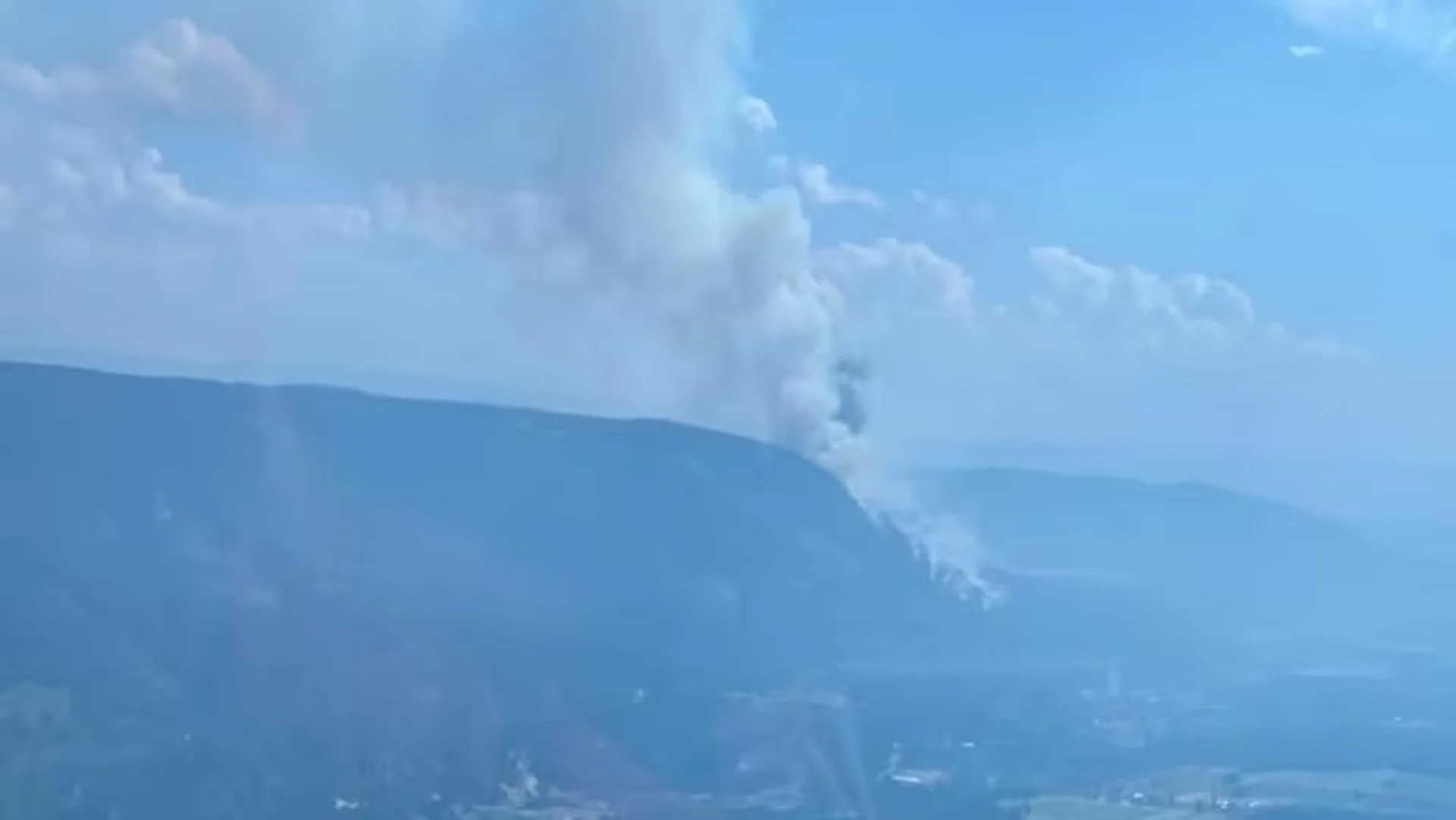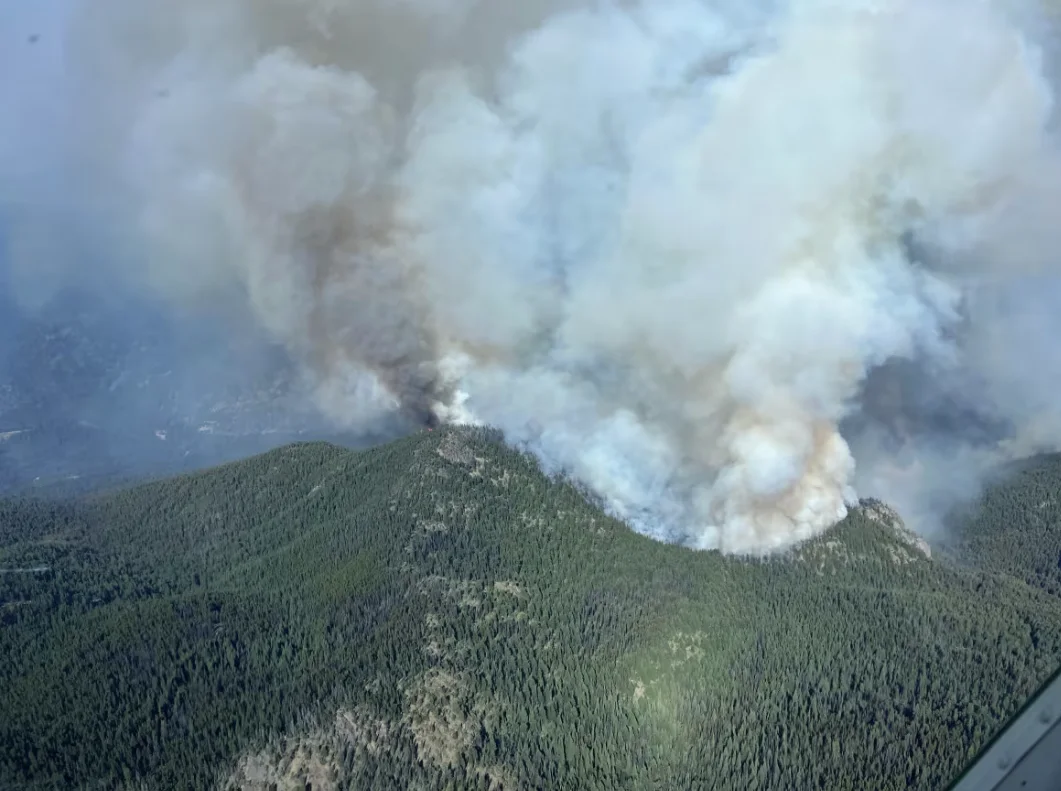
New B.C. wildfire doubles in size overnight
A fire in the North Okanagan, the latest B.C. Wildfire Service (BCWS) designated wildfire of note, forced dozens to evacuate their homes Tuesday afternoon.
The Hullcar Mountain wildfire near Vernon has doubled within the last 24 hours, from 3.3 square kilometres Tuesday afternoon to 6.7 square kilometres Wednesday morning.
CANADA'S WILDFIRES: Visit The Weather Network's wildfire hub to keep up with the latest on the active wildfire season across Canada.
Tuesday evening, the Columbia Shuswap Regional District (CSRD) issued an evacuation order for 17 properties on the east side of Salmon River Road and the west side of Deep Creek Road.
Local traffic is open in the evacuation order area of Salmon River Road. A detour is available through Yankee Flats.
An expanded evacuation also alert has been issued in the area, including 25 properties on the east side of Salmon River Road and on the west side of Deep Creek Road, according to the CSRD website. The CSRD says people in the area should prepare for a possible evacuation.
The fire Spallumcheen and the Splatsin First Nations have also issued evacuation orders and alerts in response to the fire.
The BCWS declared the Hullcar Mountain area a wildfire of note, meaning it is highly visible and a potential threat to public safety.
BC wildfire Information officer Taylor Shantz says 51 personnel were working on the fire on Wednesday.
SEE ALSO: Startling video shows first moments of the south Jasper wildfire
She says the southeast corner of the blaze is the most active and has been the focus of helicopters and water-skimmer planes working to "knock back fire lines."
As of Wednesday afternoon, it was one of more than 340 wildfires in the province.
Officials say lightning, the largest cause of wildfires in B.C., is suspected.
More evacuation orders
The BCWS has also issued evacuation orders for two separate fires in the Penticton area — one for the Lower Blue Mountain wildfire Tuesday afternoon, where the fire is more than 0.4 square kilometres and a fire in the West Bench area that was human caused.
The Penticton Indian Band issued an evacuation order for the Lower Blue Mountain wildfire, affecting around 10 properties. The evacuation order was lifted Wednesday afternoon, according to Emergency Info B.C., and affected residents may return home, although they could have to leave again on short notice. As of Wednesday afternoon, the BCWS reported the wildfire is under control.
Other areas of B.C. have seen evacuation orders dropped to alerts, including Argenta Creek on Tuesday afternoon.

The Shetland Creek fire is pictured on August 2. (B.C. Wildfire Service)
The Regional District of Central Kootenay's emergency operations centre downgraded the order for 116 properties south of Duncan Dam Lookout Road and Argenta-Johnsons Landing Road. However, east of Dundan and Argenta Johnsons Landing roads remain under an evacuation order. The fire started July 18, and over 180 square kilometres have burned.
An evacuation order and alert are still in effect for the Dogtooth wildfire near Golden, where more than 50 square kilometres have burned since July 22. The BCWS says rain and thunderstorms are expected until Friday afternoon, and clear skies are forecast for the weekend.
DON'T MISS: Surge of water from B.C. landslide dam breach fills Fraser River
Hot, dry conditions continue
Thunderstorms pose a threat during wildfire season, CBC science specialist Darius Mahdavi said.
"Lightning is the most straightforward to understand — lightning means new fire starts, so the more concentrated the lightning, the more concerning the storm," Mahdavi said.

The Argenta Creek wildfire is pictured on July 29. (B.C. Wildfire Service)
But there is another piece most people don't think about, Mahdavi said, which is wind.
"Thunderstorms typically bring strong, gusty winds that allow fires to become a lot more aggressive and spread much more easily," he wrote. "This can happen with little to no warning, making it all the more dangerous."
This week, most lightning activity is expected to be concentrated in the southeast and along the Coast Mountains, Mahdavi said.
Thumbnail image credit to the BC Wildfire Service.
This article was originally written by Abby Luciano and published for CBC News. It contains files from The Canadian Press.










